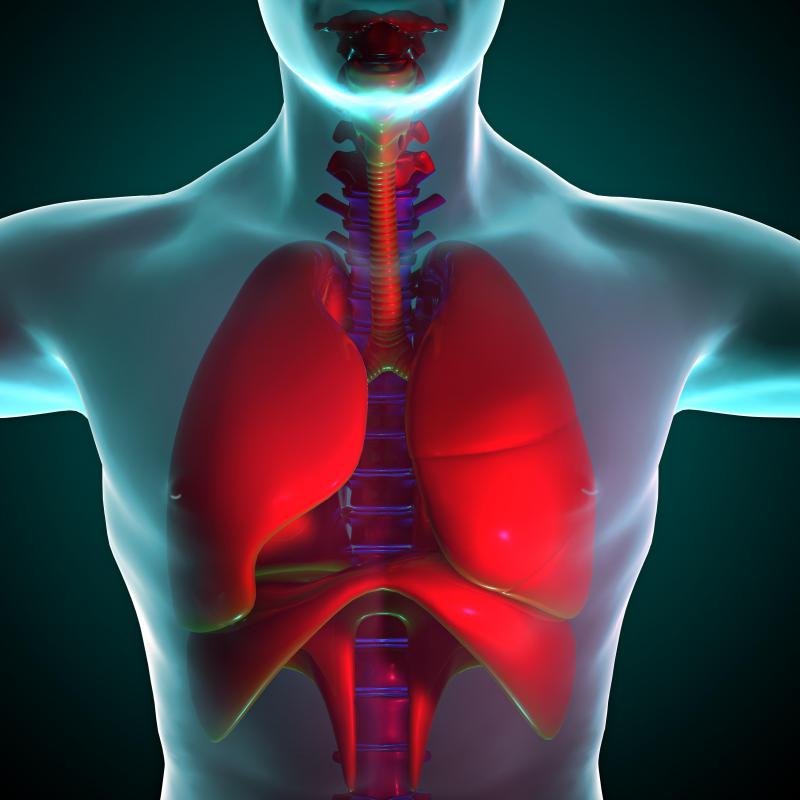At WiseGEEK, we're committed to delivering accurate, trustworthy information. Our expert-authored content is rigorously fact-checked and sourced from credible authorities. Discover how we uphold the highest standards in providing you with reliable knowledge.
What Is a Terminal Bronchiole?
A terminal bronchiole is a tiny airway transporting air in and out of the lungs. The second to last branch of the bronchi, a terminal bronchiole is a subdivision of the bronchioles and itself branches into the respiratory bronchioles. These bronchioles directly penetrate the alveoli, the bud-like sacs filled with capillaries where oxygen and carbon dioxide enter and leave the bloodstream. This respiratory airway is known as a terminal bronchiole because it is the final pathway of the conducting zone. The conducting zone includes all segments of the respiratory system up until this point — among them the nose, trachea, bronchi, and bronchioles — and functions to increase the temperature of and add moisture to the incoming air, as well as filter it of pathogens.
Beginning where it enters the nose via the nostrils, inhaled air is swept into the nasal cavity and backward into the pharynx or throat. Passing through the larynx, better known as the voice box, it is drawn into the trachea by the action of the diaphragm muscle beneath the lungs, which fills the underside of the rib cage and acts like a suction cup when it contracts. Air pulled into the trachea splits off into either lung by way of the bronchi, which feature many tiny branches, the bronchioles. If the lungs were a budding tree, then the trachea or windpipe would be the trunk, the two bronchi would each be a branch, the bronchioles the limbs splitting off these branches, the terminal bronchioles the twigs on the limbs, the respiratory bronchioles the stems of the leaves on the twigs, and the alveoli the buds of the leaves.

As the final portion of the conducting zone, the terminal bronchiole performs the same functions as the segments before it. It warms the air, contributes moisture, filters and encourages continued airflow by expanding to decrease any resistance met by the incoming air as it makes its way toward the alveoli. The last two functions are of particular importance, as the air that reaches each terminal bronchiole is already nearly warmed to body temperature and moistened.

At this point, the air also been fairly well stripped of pathogens. In fact, terminal bronchioles contain few ciliated cells, the cells found throughout the conducting zone whose job is to collect allergens and other unwanted particles carried in inhaled air. Instead, they are lined with a type of unciliated epithelial cell known as a Clara cell, which secretes a protein known as Clara cell secretory protein (CCSP) whose enzymes break up toxins found in the air as well as suspended in lung fluid.

In addition to defense, the Clara cells help the terminal bronchiole to remain open as air passes through it. They release a type of substance known as a surfactant, which decreases the tension of the epithelial lining of the bronchiole. this makes expansion of the airway possible as air is inhaled. Conversely, as air is expired from the lungs, the surfactant prevents the vacuum created by exhalation from sucking the tube-shaped bronchiole shut.
AS FEATURED ON:
AS FEATURED ON:
















Discuss this Article
Post your comments